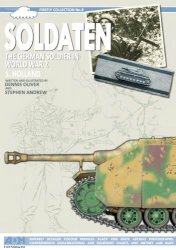The relative quiet that had reigned along the Suez Canal since October 1968 was broken in March 1969. Several Egyptian aircraft penetrated Israeli air space on reconnaissance, and one of them was shot down. A concentrated artillery exchange developed and spread along the Canal, on the second day of which the Egyptian Chief of Staff, General Abd al Muneim Riadh, and several of his staff officers were killed while in a forward position in Ismailia supervising the new offensive. Once again, casualties were suffered by both sides, and Egyptian towns, ships in the Gulf of Suez and installations sustained further considerable damage. After a short lull for a few weeks, the Egyptians renewed the War of Attrition on 10 April 1969; thereafter, it continued without respite for a period of sixteen months.
At this point. President Nasser declared that Egypt no longer recognized or adhered to the cease-fire that had been in existence since 1967. Indeed, on 1 May in his annual May Day speech, Nasser declared that 60 per cent of the Bar-Lev Line had been destroyed by Egyptian fire and that the Egyptian Army had now moved from the phase of ‘active defence’ to the ‘liberation’ phase. The War of Attrition was now on with a vengeance.
The Egyptian policy was based on evaluations of what they considered to be certain basic vulnerabilities in the Israeli national character and military approach. Basing themselves on the assumption that the Israeli armed forces have always shown their true strength in a war of movement in which speed and manoeuvrability are of the essence, the Egyptians came to the conclusion that the Israel Defence Forces would be at a disadvantage in a static war of attrition, in which manoeuvrability was of little value and in which Egypt possessed a marked superiority over Israel in the main weapon for such a type of war, artillery. The Egyptians were also aware of the extreme sensitivity of the Israeli population to loss of manpower. They realized that, by creating a constant drain on Israeli manpower by means of attrition, they would be striking at what they considered to be the Israeli Achilles’ heel. Accordingly, their purpose was to wear out the Israel Defence Forces by constant attack and thus to bring about a reduction of morale both in the Israeli armed forces and in the civilian hinterland; to destroy as much of Israel’s war equipment as possible; and to impose as heavy an economic burden as possible on Israel. This situation, they believed, would ultimately soften up the Israel force to such a degree that sooner or later situations would be created in which it
Would be possible for chosen Egyptian forces to cross the Canal and seize a bridgehead on the eastern bank. Furthermore, there was a consideration that the continuous conflagration along the Canal would keep the issue alive before the United Nations and thus intensify political pressure on Israel.
To meet this military policy, Israel enunciated its own policy, which was best expressed by the vast expenditure invested in the Bar-Lev Line along the Suez Canal, with its complex system of fortresses, patrol roads, and earth walls, approach roads, underground control centres and tank and artillery positions all sited for mutual support. The first principle of Israel’s defence was to ensure complete control of the water line along the Canal and to be in a position to beat back any Egyptian attempt to cross the Canal or to establish a bridgehead. The second purpose of such a system of defence along the Canal was to keep to an absolute minimum the number of casualties Israel would have to suffer. For this purpose, the Israeli fortresses were constructed to withstand the heaviest possible Egyptian barrage. Furthermore, the new deployment would be such as to enable Israel to wage its ‘counter-War of Attrition’ against the Egyptians and force them to return to an acceptance of the cease-fire. But, as the Egyptians had foreseen, this new policy required the Israeli forces to adapt themselves to the unaccustomed strategy of static defence, in place of the tactics based on speed and manoeuvrability on which they had as a matter of principle based themselves hitherto. So the construction of the Canal line continued. It included the construction of an earth wall designed to prevent Egyptian observation of Israeli activities and preparations along the Canal. The Egyptians harassed the Israeli engineering forces attempting to complete the wall, obliging the Israelis at a certain point to roll a succession of railway wagons into position and fill them with earth as a basis for the wall. Both sides at this stage adopted a more active policy, each sending patrols across to the enemy side. One attempt by Egyptian commandos to capture an Israeli fortress was foiled.
The artillery exchange continued along the Canal, with both sides suffering losses. Because of the very considerable strength of the Israeli fortresses along the Canal, the Egyptian artillery failed to penetrate or destroy any of them, however. Accordingly, the Egyptians adopted a policy of steady harassment of all signs of life and movement along the Canal with the purpose of making things as difficult as possible for the Israeli forces and inflicting as many casualties as possible. So Israel returned to the strategy of indirect approach, carrying out daring commando raids deep inside Egyptian territory. They cut the high-tension lines between Aswan and Cairo, and attacked the dam at Najh Hamadi, a bridge near Idfu and Egyptian coastal bases at Ras Adabiah on the western shore of the Gulf of Suez. In one such raid, 29 Egyptian soldiers were killed.
The Egyptians, for their part, conducted a very active strategy of offensive operations, which were carried out with increasing frequency, on the Israeli-held east bank of the Canal. Mines were laid and units crossed to ambush Israeli patrols and traffic moving along the north-south road
Parallel to the Canal. In July, one of the many Egyptian attempts succeeded in penetrating an Israeli tank laager south of Port Tewfik, inflicting eleven casualties. It was during this phase, on 24 May 1969, that an Egyptian MiG-21 was shot down while flying at a height of 22,000 feet by an Israeli-operated Hawk ground-to-air missile. This was the first time

In the Middle East conflict that a Hawk missile had been used to bring down an enemy aircraft; first deployed in the United States air defence system in 1959, the Hawk missile had been in Israeli service since 1964.
By July 1969 it became evident to the Israeli commanders that their counter-plan was not having the desired effect, and so a new approach was decided upon. This envisaged massive air retaliation coupled with stepped-up raids of a scope not mounted hitherto. On 19 July, Israeli forces attacked Green Island, an artificial island fortress in the northern Gulf of Suez which had been built originally to protect the approaches to the Suez. It was built as a fortress, heavily fortified, manned by approximately 200 Egyptian troops and, on the face of it, appeared impregnable. Nevertheless, Israeli commandos succeeded in landing on the island and, in an action characterized by great bravery — one of the most daring and difficult ever undertaken in the history of the Israel Defence Forces, replete with daring actions — the fortress was captured. Heavy losses were inflicted on the Egyptian defenders, at a cost of 16 casualties killed and wounded to the Israelis; then the attacking force blew up the fort and its installations and withdrew.




 World History
World History









